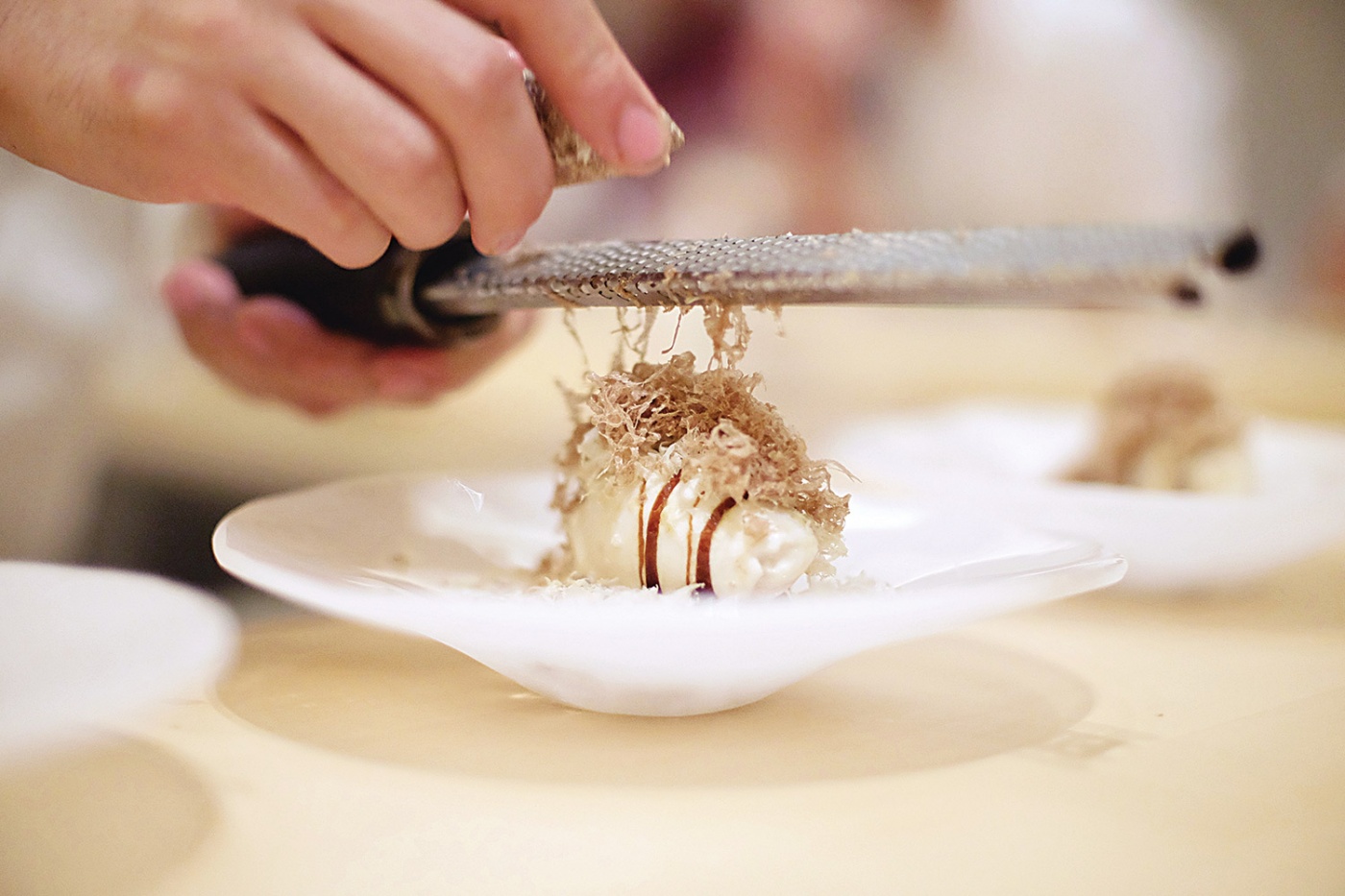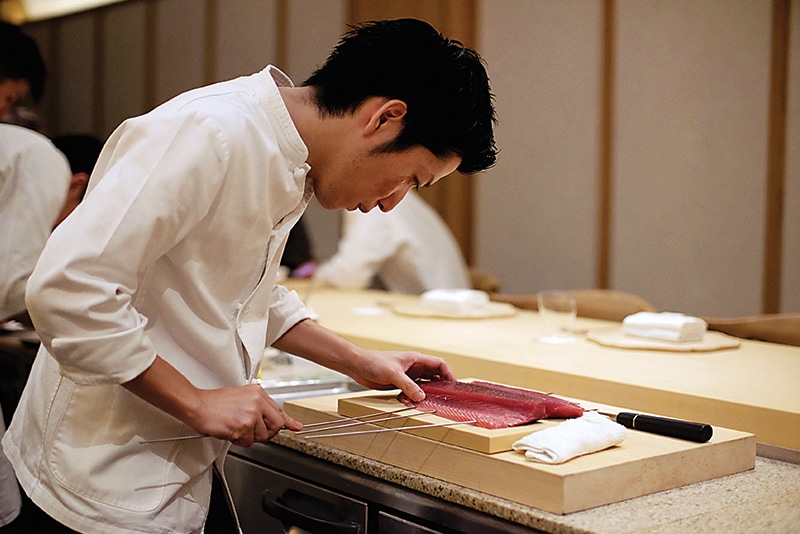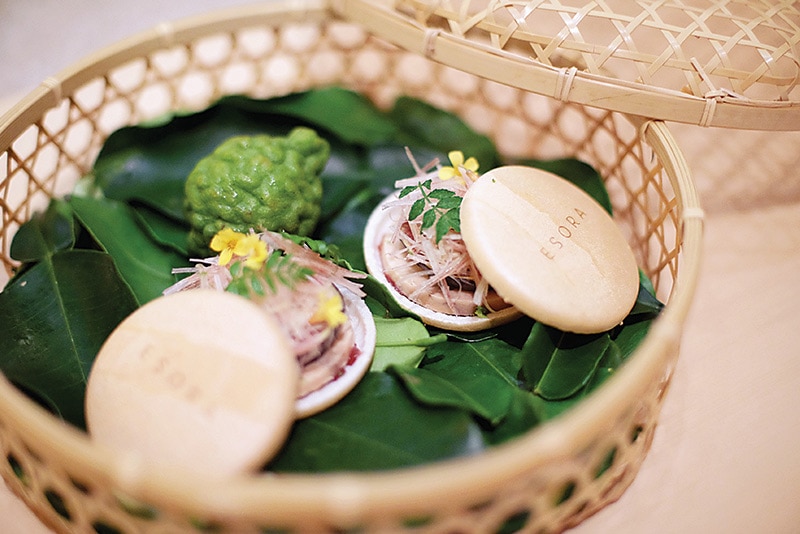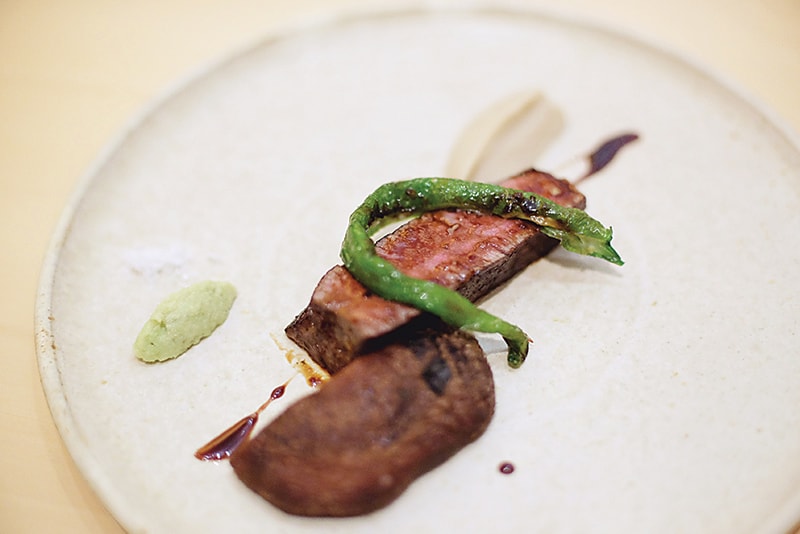ESORA: The Rise of the Culinary Bambinos
2018 has been an epic year of change for the F&B scene in Singapore, notwithstanding the sad departure/closure of several renowned institutions in the industry. With several big names out of action, this creates room for the younger, more ambitious chefs and restauranteurs to strive and crack the glass ceilings of fine dining. And for many of these up-and-comers, beige is the new white; and wood is the new marble.
Contributing significantly to these efforts, is the newly opened ESORA, an intimate 26-seater Kappo-style establishment that has recently added the T.Dining Best New Restaurant award to its impending accolades, just 3 months of opening its doors. Impressive. Even more so when you personally experience the first-class dining shift gears on full power, combined with the zen-like disposition of the nature forward space. ESORA translates to ‘painting in the sky’ in Japanese, mirroring Chef Koizumi’s love for the sky and his affinity with nature. If you close your eyes, just imagine you are in the old cedar forests of Hakone instead of the gentrified street that is Mohamed Sultan Road; the light pitter patter of a passing shower and the barest hint of timber in the air.
The tone is set with a warm bowl of dashi. It’s a labour of love, flavoured with dried katsuobushi and yuzu. You ease back into your chair, and do a double-take to leave your worries at the door. Shigeru Koizumi traverses the kitchen with quiet confidence, his muscular forearms executing restrained movements with a gentle demeanour as if to blend into the restaurant. All around him, young staff are buzzing around like soldier bees, purposeful and teeming with energy. In Koizumi’s utopian world, the kitchen runs like clockwork; the team oblivious to scrutinising glares as if a one-way mirror was all that stood between us.
The Foie Gras Monaka is one of the best things I’ve put in my mouth this year. Crispy monaka shell harbouring a goose liver torch, grounded by sweet fig and given a nutty edge with sesame creameux. Wisps of ginger flower and grated kaffir lime brighten up the savoury confection. The staff will spare no effort in winning your interest in their dedicated tea pairing programme. Heavy alcoholic imbibers can take comfort in the fact that these hand blended teas served in sexy glassware can have a placebo effect. The tea odyssey begins with the Sparkling Oriental Beauty tilted into a champagne flute, a delicate brew infused with hibiscus flower and umeshu, and then given an effervescent character with the introduction of soda. Champagne, move along now.
The meal takes a turn with the hideous monk fish taking shape in a picture perfect duo of dishes: chawanmushi with dashi jelly topped with coriander cress, flanked by a slender sliver of toast with churned Ankimo (Monk Fish Liver) christened with Narazuke (Japanese pickles) that have been soaked in sake lees. The tea pairing that emerges is an Oolong blend with a distinct creamy backbone.
You’ll feel the warm embrace of Autumn with the Sashimi selection. Pretty vessels sitting on the most wondrous bed of autumn leaves lit by a candle tube made from thinly shaved radish. I count my blessing avidly. I have never seen a presentation so exquisite. There’s lightly smoked katsuo, a trio of tuna that is to be eaten irrefutably in an increasing order of luxury. Bafun Uni nigiri, and finally Hokkaido clams with green mustard. It’s clearly a dish founded by great produce—seeking approval via an ostentatious presentation. And you know what? It’s getting its way.
Chef Koizumi prances over to a small induction panel placed strategically in front of my vantage point. He proceeds to fish out matsutake mushrooms from a simmering stock pot. I have had an ocean’s worth of hearty soups in my time, but nothing that resembles anything like this one. It’s like a fever dream of Japanese inspiration—clear as day, yet bursting with sweet earthy flavours from the mushrooms and abalone that has been slow cooked for 6 hours at 85 degrees. It makes you appreciate each spoonful as opposed to gobbling it down with a certain vengeance. And then there’s the momentous moment when sprightly sudachi lime marries the seaworthy broth, delivering an exquisite combination.
Here at ESORA, everything occurs with graceful harmony, the chefs obviously are attuned to the level of hunger of each guest, committing themselves to the finer details like the pacing of courses. There is a thick slab of Japanese Amberjack belly loin, the fish lightly tinted with sweet smoke from the charcoal grill overwhelming my palate with a concentration of briny fats. Its heftiness, a precursor to the brilliance of Omi Wagyu glazed with aged red vinegar. I muse, almost grinning in triumph at the wonderful deliverance of the prized meat first cooked in an oil bath before hitting the grill. The Daikoku Shimeiji mushroom continuing in the same meaty wavelengths. A donabe or claypot of snow crab is the highlight of the Kappo experience, and I am glad that Chef Koizumi stuck to traditions. The Hokkaido Yumepirika rice is the perfect foil to the sweet interceptions of crab meat.
Desserts get equal attention here and the meal concludes without any blemishes with the Wasanbon Ice Cream. A dessert so light, yet so resounding in flavours that it’s almost whimsical. It sits on an intense scaffold of steamed chestnuts with an added flourish of Alba white truffle shavings—contributing a nice earthy inflection into the milky combination.
There is an almost serendipitous feel that washes over you as you cup a ceramic mug of warm matcha to your lips. ESORA marries the stylish elegance of Odette with the timeless ideology of Kappo-style feasting to create a dynamic institution that feels entirely organic, yet distinctly authentic. For those of you who think fine dining is dead, it’s not, it’s just metamorphosing. This is hope. And outside, a thick Singaporean rain begins to fall.
[ Read: Is Fine Dining Dead in Singapore? ]





